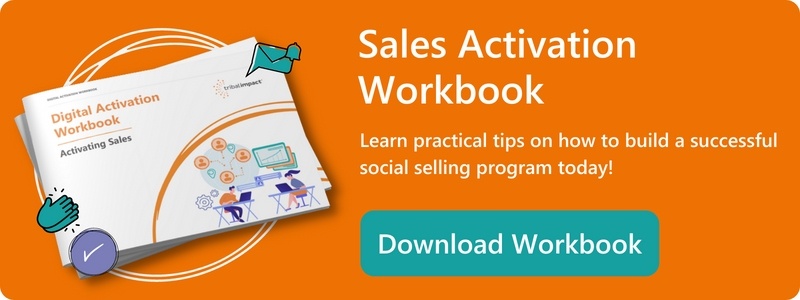Stories are a powerful tool that can make anything we tell someone more engaging and memorable. Gartner estimates that by 2025, 80% of B2B sales interactions will be via digital channels, highlighting the importance of storytelling in modern communication.
In a recent LinkedIn Live, Sarah chatted with communications professional Lucy Thorpe. She’s the former head of comms at Sapphire, and she honed her storytelling skills as a BBC Radio Journalist.
You can listen to the full interview below, or read the summary of what they discussed in this blog.
Lucy started off by explaining that as a radio journalist, it was important that people got the main points as quickly as possible, since news stories don’t have a beginning, middle, and end. She also had to balance being entertaining and informative. This helped her in her career at Sapphire and beyond.
The Three Types Of Stories
Lucy explained that sales, marketing, and comms are all about communication. And there are three types of stories that they can use:
- Case studies: These are a way to sell your product by showing the pains previous clients have had that prospects may also have, and talking prospects through how the problem can be solved.
- Origin stories: These are all about how the company came about. Why did you set yourselves up? What does it tell people about your values? This gives you touch points you can keep coming back to, such as being an inclusive family business.
- Narrative: These are for when things go wrong, or someone says something and you don’t like the way you’re portrayed. It gives you control over the narrative so that you can turn it around.
Sarah also mentioned the employees with the best stories are your internal subject matter experts. Content shared by your employees gets 8X more engagement than branded channels so it is worth equipping your employees with storytelling skills.
How To Train Employees To Communicate Stories With Confidence
Lucy believes origin and narrative stories must come from the top.She said that the core company story should change every year. To get next year’s narrative, comms teams should sit with the leadership and ask them what the narrative will be.
She also finds the monthly all-hands useful:
‘At Sapphire, we used to have a monthly all-hands meeting in which the senior leadership team would present. Something like that is a great place to get out your message.’
At Tribal we recognise the importance of building your C-Suite’s digital presence, that’s why we’ve created this handy guide to help you get started.
Storytelling vs Data
Lucy has found that people can be shocked when they learn that people respond better to narratives than data.However neurological studies have shown that more areas of the brain that light up when you tell someone a story than when you just give them statistics. Stories also help with recall.
So combining the two can be a powerful tool.
Why Might Someone Be Hesitant To Implement Storytelling?
Being a corporate, responsible company used to be about suits and business language and doing things the corporate way.We’ve learned recently you can afford to be more human. That kind of thing turns business prospects into friends.
Someone might be reluctant when it comes to storytelling because of the company culture in their previous role(s). It’s a big mindset shift.
To help with this, Lucy recommended finding ways to get information out of employees’ heads wherever you can. Over coffee, in the office, etc. She’s found that it’s the more casual conversations that unlock stories because the pressure is off. But it’s important to be patient – passing engagements can be the secret.
Storytelling And The Generational Shift
Millennials and Gen Z make up 64% of business buyers. They have a strong preference for a sales-free buying experience and their communication preferences are changing.Sarah explains that as they become the decision-makers, it will be more about relationships and interpersonal skills. Stories are how you differentiate yourself.
Lucy adds that it’s about showing what your company does outside of work is one way to do this. For example, sharing charity work done by employees or the company as a whole. This shows you walk the walk as well as talk the talk.
Creating a company-specific hashtag can be a way to connect employees who’ve done something similar. This introduces less corporate content into the feed, humanising the employees who share that kind of content and showing a different side to the business.
Stories work well in image form, too. If Lucy shares photos of employees at an event, she asks for shots of them doing interesting things. For instance, instead of a photo of an event stand with nobody in it, a photo of people throwing sweets into their mouths while at the stand.
People want to see people doing things, being entertaining, and having fun.
Ethics And Generative AI
Generative AI can help pinpoint the benefits of products or sum things up. But it’s stripped of humanity and storytelling rhythms – what it comes up with can be bland and generic.
Sarah explained it well:
‘You can’t rely on Chat GPT to come up with your experiences. Stories really start from experiences. I wonder if when training employees to be able to tell stories, there’s an element of reflection skills that you need to teach them, or a bit of self-awareness; of digging into stories that you might have. Because the best LinkedIn posts start with something relatable.’
Boosting Sales With Stories
Stories tap into our brains in a deeper way than statistics. They’re a powerful tool to support sales and marketing, helping build brand trust that attracts new customers and builds employee relationships.At Tribal, we recommend finding where your employees are currently at and working with them to help them on their journey. Find out more about how we help bring employee voices to life through our social maturity model.

